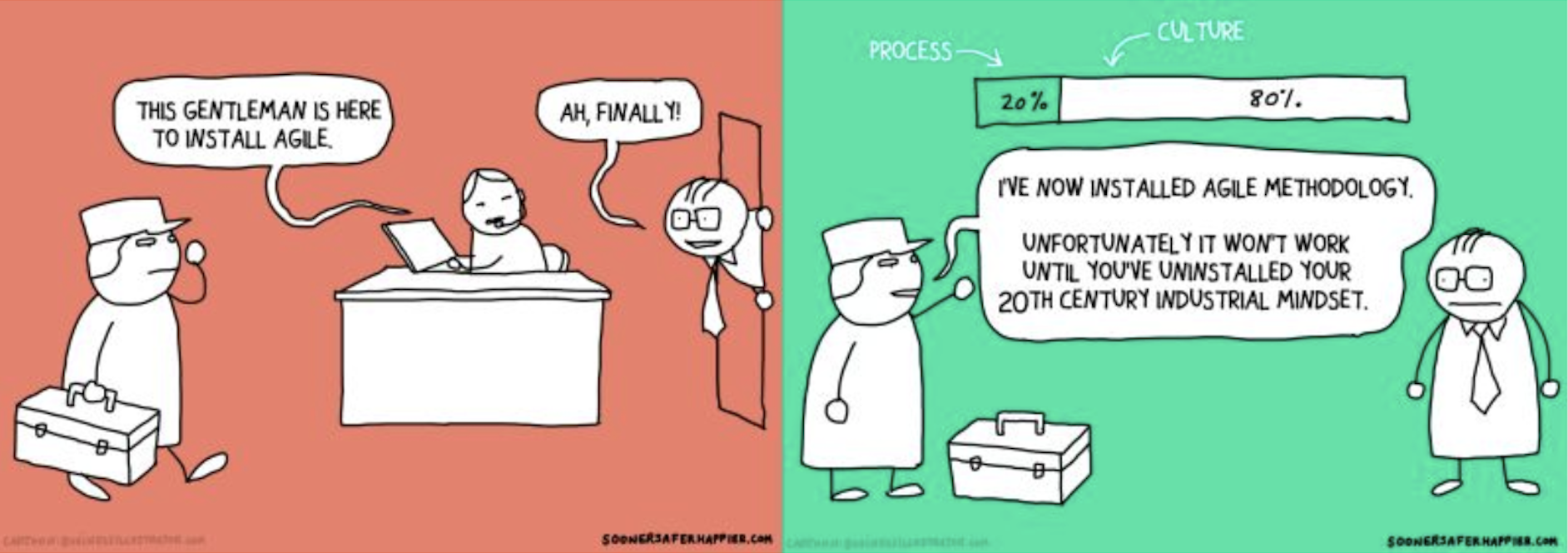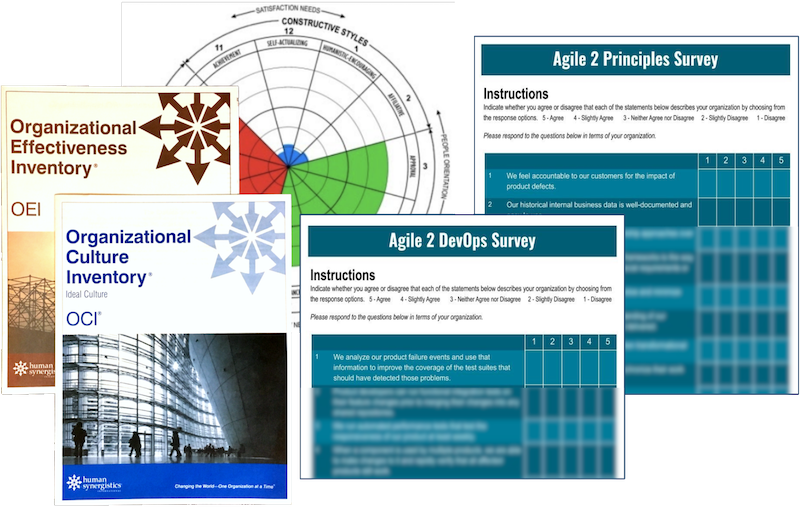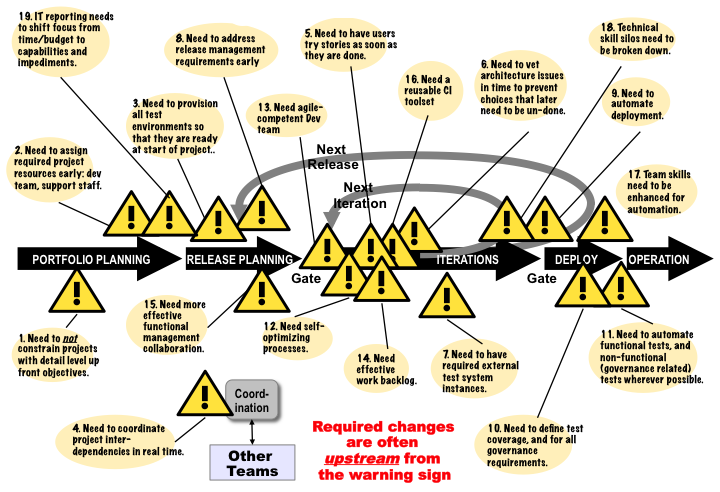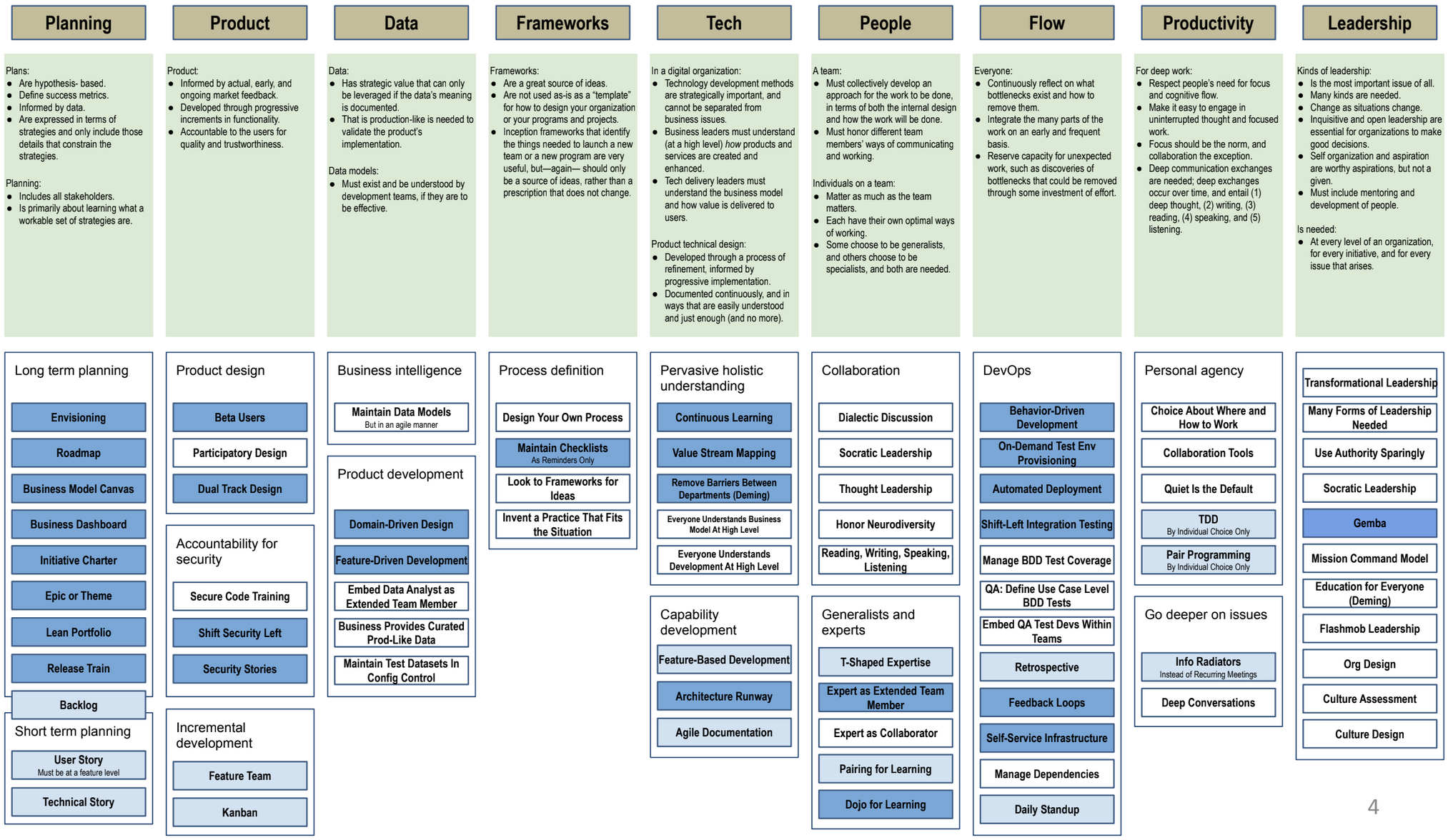Give Us 3 Months, and We Will Accelerate Your Agile Transformation
That is enough time for us to figure out what is slowing you down, and help your people to get things going—really going!
We don’t install some framework and say “good luck”. We cover all of the things that you need to deal with.
Our approach really is no-BS, no framework peddling, the real deal. We use tools that tell us real things, and we teach people what actually works. We’ll uncover all of your blockers—culture, process, knowledge, structure, and behavior. We’ll explain it all to you, and we’ll develop a strategy with you. Then we’ll do the heavy lifting to teach and guide your people so that they can execute.
It will be like nothing you have experienced before from consultants.
We don’t want to give away details about our secret sauce here, so please reach out to us. We’ll give you the details. We have a process for helping you. Our process is not something we tell you to do: it is what we do.
But below are some of the things that we do.
Culture matters
Agile coaches will tell you that you need to have an “Agile culture.”
But what is that?
At Agile 2 Academy, we realized that we needed to have actionable advice for how to have an “Agile culture,” so we collaborated with Human Synergistics. Our goal was to firmly establish how the powerful behaviors that Agile 2 advocates can be supported by culture.
We got specific. We mapped Human Synergistics’ 12 organizational cultural dimensions and 29 effectiveness dimensions to Agile 2 behaviors. We can now say precisely what aspects of culture can either enable or impede Agile 2 behaviors. That means that if you survey your culture, to determine what it really is, you can now identify what aspects of your culture are in the way.
Because just saying you want people to behave a certain way does not mean that they will.
Once you know what aspects of your organization’s culture are blocking you, you can strategize to get them out of the way, by shifting just the right aspects of your culture, which is very possible.
As Peter Drucker famously said, “Culture eats strategy for breakfast…,” so Agile just is not going to work if your culture is blocking it. You need to include some cultural change in your Agile strategy—otherwise, you are really just wasting your time and resources. The question is what aspects of culture need to change?
We can tell you.
OCI® and OEI® are registered trademarks of Human Synergistics International
What About Agile Practices?
It’s not just a matter of culture though. Even if your organization had the perfect culture, it still might adhere to methods that slow it down. There is much more to agility than culture: you also need agile behavioral norms: customary ways of doing things—approaches and practices. For example, when a new initiative is needed, do people automatically start creating a big task plan, or do they start collaborating about how to test their ideas on a small scale?
By identifying system-wide issues, we can help to improve your end-to-end process
Our Agile 2 and DevOps surveys tell us quickly if there are behavioral patterns that need improvement. We also look for system-wide issues, by doing a value stream or constraint analysis.
But when we find gaps in people’s practices and behaviors, how do we get them to change? That’s where education and coaching come into play. Education and coaching for approaches that truly lead to agility: Agile 2’s approaches.
We can recommend practices that support your agility goals
Agile 2’s approaches and behavioral norms are far more effective than those of “classic” Agile. We explain why here. But we have also closely examined practices and techniques that are in use in the industry, and identified which ones might help an organization to use Agile 2’s ideas. This “practice map” is something that we pull from when we help organizations to transform. We also pull ideas from existing frameworks, and Agile 2 ideas are extremely helpful when using a framework.
And then there is DevOps. DevOps approaches and practices are critical for any organization that operates on a technology platform. And it is not just for the tech teams: everyone who interacts with or expects things from the tech teams needs to have a basic high level understanding of “how the sausage is made”—otherwise they cannot participate in holistic discussions about time-to-market and quality tradeoffs between investing in making things better or faster versus making more things. And by the way, that applies to manufactured hardware products as much as it does to software.
That’s why our DevOps training is arguably the best in the industry, because we know how important it is today. Rather than being a “tour of tools” or “setting up a pipeline”, our training reproduces the real issues that occur in real world situations.








